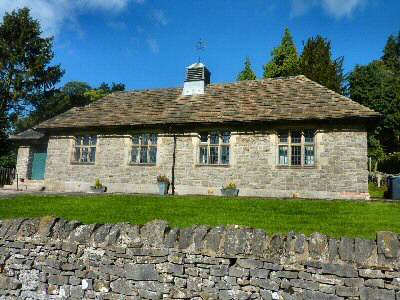TISSINGTON
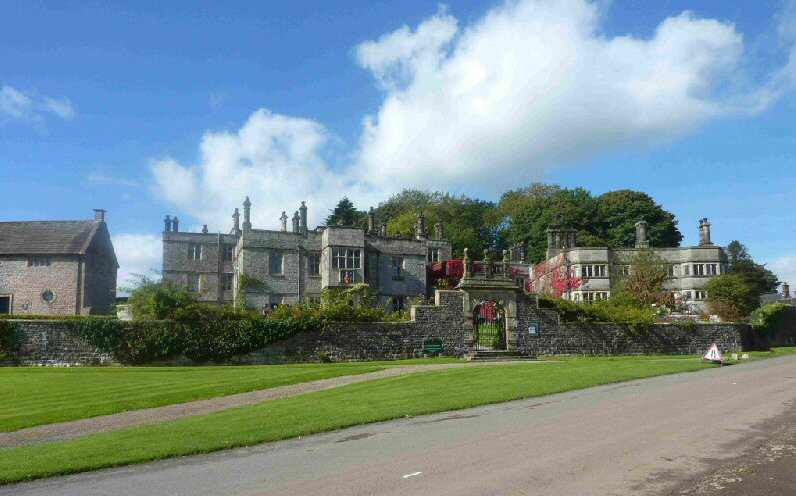
PLAN YOUR DAY OUT
Location: Off the A515 from Ashbourne (3.5 miles) to Buxton Road. (SK175524)
Visit: Tissington Hall is a fine Jacobean Manor House, which stands in a slightly elevated position behind a walled garden. It is open to visitors 28 days per year for guided tours. Please see the website for the latest details. www.tissingtonhall.co.uk
Refreshments: Herbert’s Fine English Tearooms (formerly the Old Coach House) serves breakfasts, lunches, snacks, and afternoon teas, all served on vintage crockery in beautiful surroundings. A kiosk on the Tissington Trail by the car park is open during busy periods.
Walk: Tissington is situated in wonderful walking country, as this short walk attests. It visits Parwich, which must rank as one of the most attractive villages in the southern part of the Peak District, but not being on the main route to anywhere, it remains relatively undiscovered.
Special Places of Interest in the Locality: Ashbourne is one of Derbyshire’s finest towns, with a wealth of Georgian architecture. – Ilam Village, with its alpine-style cottages and proximity to Dovedale, is a very popular attraction. The National Trust grounds and country park of Ilam Hall are open to the public. – Osmaston, with its delightful half-timbered cottages under thatched roofs, lattice windows, a duck pond overlooked by a village green, a 160-year-old church and an old-world pub, all combine in a beautiful picture postcard setting.
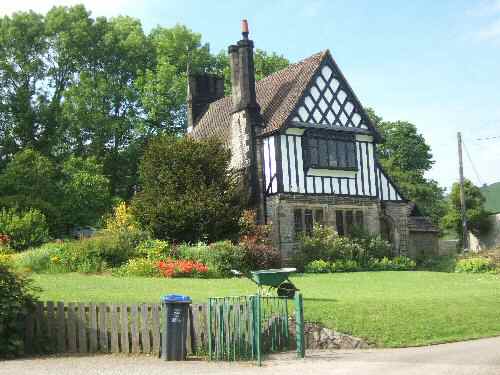
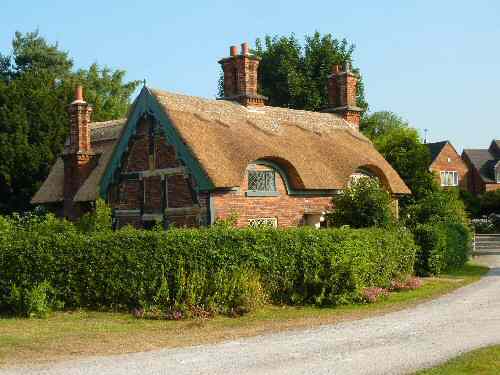
INTRODUCTION
Tissington is one of the prettiest and most unspoilt villages in the country. The visitor turning off the busy Ashbourne to Buxton Road for the first time through the large rusticated lodge gates is surprised. A sense of something rather special fills the mind as the drive to the village passes along an avenue of fine-looking 200-year-old lime trees. Unexpectedly, the village is the first reached before the hall comes into view.
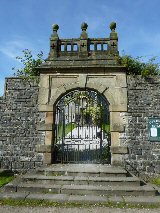
Only moments after leaving fast-moving traffic behind, it seems like another world where peace and tranquillity prevail. No planner designed it; the beauty of the village is the result of evolution. With its pretty limestone cottages and well-tended gardens behind wide grass verges and backed by mature trees, Tissington does not disappoint. A small stream further enhances the scene, flowing along the side of the main street. It emerges from a culvert near Hall Well and runs bubbling along past St. Mary’s Church on its way to its final destination at the village pond.
Further up the main village street is Tissington Hall, a fine Jacobean Manor House, standing slightly above the road behind a walled garden. The wall is broken only by a handsome 17th-century gateway with wrought iron gates by the famous Derbyshire ironsmith Robert Bakewell. The house was built in 1609 by Francis FitzHerbert, but extended by his descendants. It replaced an earlier hall on the opposite side of the road.
In 1997, Sir Richard converted the Old Coach House into a most attractive and popular tea room, which currently offers morning coffee, lunches and teas in delightful surroundings. It is now known as Herbert’s Fine English Tearooms, where you can sit inside or outside and enjoy the surroundings.
By the side of the old school, tucked away in a corner by the pond, are the Old Kitchen Gardens, where rare shrubs and other perennial garden plants are grown.
Tissington is known as the mother place of well-dressing, and people worldwide come to witness the annual ceremony. It occurs on Ascension Day when five attractive wells and a children’s well are dressed. The Dressing consists of erecting boards covered in clay, into which thousands of flower petals are pressed to create an elaborate tableau of some biblical or topographical scene.
Well Dressing probably took place in 1350, in thanksgiving for the village’s escape from the Black Death, attributed to the purity of its water. Wells have been dressed ever since, but not in unbroken succession. The precise origins of Well Dressing are unknown, but it may date from before the Romans.
St Mary’s Church rises steeply above the main road through the village with a sparkling stream flowing close to the entrance to the churchyard. Built early in the 12th century but heavily restored 700 years later, it has a massive Norman tower with four-foot-thick walls and a well-preserved Norman doorway. Inside is a baroque-style 17th-century memorial to the FitzHerbert family, a finely carved communion rail and an early Norman font bearing crude symbolic carving.
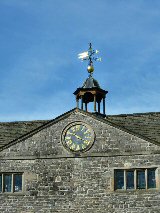
The pillars of the church doorway are worth close inspection, the grooves formed by archers sharpening their arrows in readiness for archery practice. This skill was much encouraged after the Black Death, which had left the country short of experienced archers.
In the 19th century, Tissington had quite a strong Methodist following. In 1866, a wooden chapel with a corrugated roof was built just outside the village on land not owned by the Tissington Estate. Services still take place at the new chapel erected in 1955.
A surprise awaits at Yew Tree Cottage, where part of the buildings have been turned into a candle workshop and impressive showroom (‘On a Wick and a Prayer’ website). Originally a blacksmith’s forge, it became the family home of the Wright family, who had been blacksmiths in the village for 90 years. In front of the cottage is Yew Tree Well.
When the railway came to the village, Sir Richard insisted that a cutting should hide the line. The LNWR built the line as required, and it opened in 1899. The LNWR built the cottages adjacent to the station in red brick to contrast with the stone-built properties in the village in retaliation for the inconvenience. In its heyday, it carried express trains from Manchester to London, and until after the Second World War, a daily train delivered milk from Peak District farms to Finsbury Park, London.
Following the line’s closure in the 1960s, the trackbed was removed and turned into a trail for the benefit of walkers, cyclists, and horse riders. This experimental scheme was one of the first of its type in the country. Since opening to the public in June 1971, it has proved a great success, with significant numbers of people attracted to it at weekends throughout the year and every day during peak holiday periods.

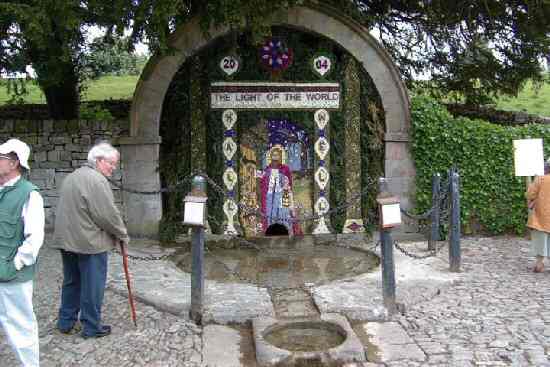
TEN FASCINATING FACTS ABOUT TISSINGTON
1. Tissington Trail covers a 13-mile route from Ashbourne to Parsley Hay, where it joins up with the High Peak Trail, which runs from High Peak on the Cromford Canal Junction to Dowlow near Buxton. Surrounded by beautiful countryside, the traffic-free trail is ideal for horse riders, cyclists, naturalists and walkers.
2. The trail is suitable for wheelchairs and pushchairs along the flat sections.

3. Cycle hire centres are at Ashbourne and Parsley Hay
4. Tissington is a popular starting point for several short, medium and long circular walks to suit all tastes. The Limestone Way, a long-distance path and bridleway, runs through the village.
5. The fields alongside the avenue leading from the gate lodge, off the A515, are an obvious example of the old medieval strip field system.
6. The stable block southeast of Tissington Hall has a pretty cupola on top with an attractive wrought iron weather vane by Robert Bakewell. The famous ironsmith who made the wrought iron screen and gates at Derby Cathedral and many other fine works. Below is a turret clock designed by John Whitehurst, the Derby clockmaker, which is said to be the first of its kind.
7. Lady FitzHerbert founded a preschool kindergarten in the old school to educate the very young; previously, it had been a tea room after it ceased being a school.
8. Two weeks before the well dressings take place, the boards for the six wells receive a good soak for seven days in the village pond. The boards are plastered with clay, and the petals are added.
9. The petals must be put in separately to overlap to allow any rain to flow off, like water from a roof.
10. An estimated fifty thousand people visit the village yearly to view the well-dressings. Temporary car parking arrangements are in force at the time.
PARWICH AND TISSINGTON WALK


